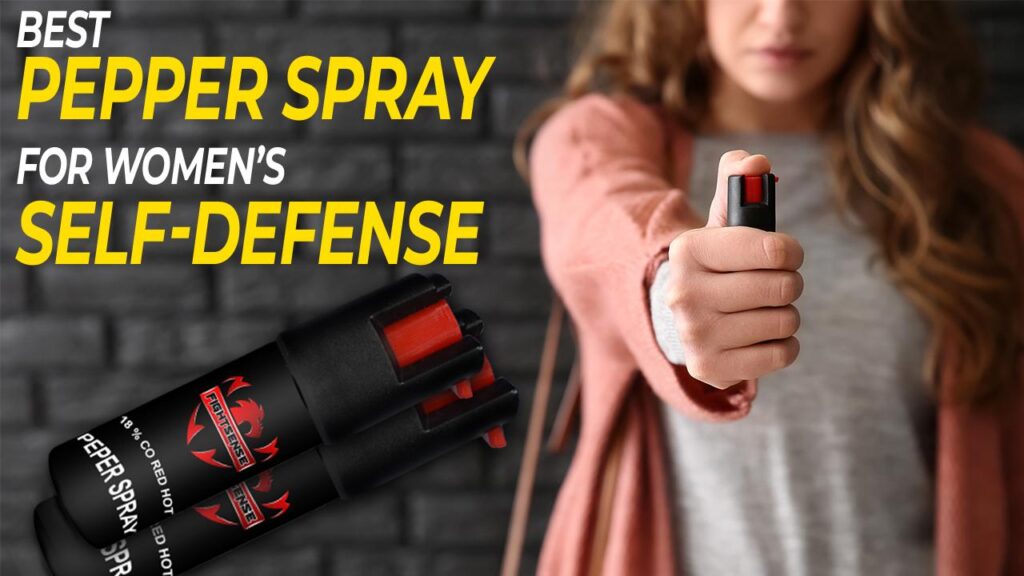Table of Contents
- Properly Securing and Storing Your Spray Device for Future Safety
- Immediate Self-Care and Medical Attention After Exposure
- Legal Responsibilities and Situational Reporting Requirements
- Evaluating Personal Safety and Planning Subsequent Actions
- To Wrap It Up
Properly Securing and Storing Your Spray Device for Future Safety
After using your spray device, the first step is to ensure it is free from any residue or dirt. Gently wipe the nozzle and body with a damp cloth, avoiding harsh chemicals that might damage the unit. Check for any visible damage or leaks that could compromise its functionality. If you notice any issues, consider replacing the device or seeking professional maintenance to guarantee it remains reliable when needed.
When storing, place your spray device in a cool, dry location away from direct sunlight and heat sources to preserve its effectiveness. Ideally, keep it in a secure spot beyond children’s reach, such as a locked drawer or a high shelf. Use these best practices for storage:
- Keep the safety cap engaged to prevent accidental discharge.
- Avoid storing in extremely cold or hot environments to maintain pressure integrity.
- Store with the nozzle facing away from places where it might be bumped or dropped.
Immediate Self-Care and Medical Attention After Exposure
After deploying a spray against an attacker, your priority must shift immediately to minimizing exposure and protecting your health. Start by moving to fresh air as quickly as possible to reduce respiratory irritation. Avoid touching your face, especially your eyes, nose, and mouth, to prevent further absorption of the chemicals. If you experience burning or discomfort on your skin, rinse the affected areas thoroughly with cold water without scrubbing. Remember, removing contaminated clothing can significantly reduce prolonged skin irritation. It’s also important to keep others nearby informed so they can assist if necessary and help you reach safe surroundings.
Seeking professional medical help is crucial, especially if symptoms persist or worsen. Indicators that medical attention is necessary include difficulty breathing, severe eye pain, blurred vision, or extensive skin irritation. When consulting healthcare providers, be prepared to describe the type of spray used and the circumstances of exposure. They may administer treatments like eye washes, anti-inflammatory medications, or other interventions tailored to neutralize chemical effects. Never underestimate the importance of professional evaluation; your prompt response can prevent complications and ensure a faster, safer recovery.
- Move to fresh air immediately to reduce inhalation of irritants.
- Avoid rubbing your eyes or skin to prevent spreading the chemical.
- Rinse affected skin areas with cold water gently and thoroughly.
- Remove contaminated clothing safely to limit prolonged contact.
- Seek medical advice promptly if symptoms are severe or persistent.
Legal Responsibilities and Situational Reporting Requirements
Following the deployment of pepper spray in self-defense, it’s critical to immediately understand your legal obligations. Laws vary widely by jurisdiction, but consistently, documenting the incident accurately can protect you from potential legal repercussions. This includes recording the exact time, location, and circumstances, along with any witnesses’ contact information. Additionally, many regions require that you report the use of chemical spray to authorities or law enforcement, especially if the attacker was incapacitated or property damage occurred. Failure to comply with these reporting mandates can lead to fines or further liability issues.
Beyond legal formalities, your situational response post-incident often involves notifying your workplace, landlord, or relevant supervisors if the attack took place in a controlled environment. Keeping a detailed record of your actions, including medical treatments or follow-up police statements, strengthens your position should legal questions arise. Remember, while defending yourself is a right, maintaining transparency through proper reporting is paramount to ensure your safety and legal protection moving forward.
Evaluating Personal Safety and Planning Subsequent Actions
Once the immediate threat has been neutralized, it’s crucial to take a moment to assess your current condition and surroundings. Check for any signs of injury or lingering irritation from the spray, as well as any potential threats nearby that may require further attention. If you experience severe discomfort or difficulty breathing, seek medical assistance promptly. Stay alert, moving to a safer location if necessary, and avoid lingering in the area where the incident occurred to minimize the risk of further confrontation.
After ensuring your safety, take these important steps to prepare for what happens next:
- Notify authorities: Contact local law enforcement to report the incident, providing as much detail as possible about the attacker and the circumstances.
- Document the event: Write down everything you remember, including times, locations, and descriptions, while the information is fresh in your mind.
- Secure evidence: Preserve any physical evidence such as clothing or personal belongings that may aid an investigation.
- Inform trusted contacts: Let friends or family know about the situation for support and additional safety measures.
To Wrap It Up
In conclusion, knowing what to do after deploying a spray for self-defense is just as crucial as the act itself. Taking immediate post-use steps-like safely securing the spray, assessing personal safety, seeking medical attention if needed, and promptly reporting the incident-ensures your well-being and supports any potential legal proceedings. Staying calm, prepared, and informed helps you confidently navigate the aftermath of an attack, turning a stressful situation into one where you maintain control. Remember, your safety doesn’t end once the spray goes off; it’s about what you do next that truly matters.Check Our Other Blogs
- StunGun – Your Trusted Source for Stun Guns, Laws, and Self-Defense Tips
- PepperSprayLaws – Your Trusted Resource for Pepper Spray Information
- StunGunLaws – Your Trusted Guide to Stun Gun Legality and Safety




